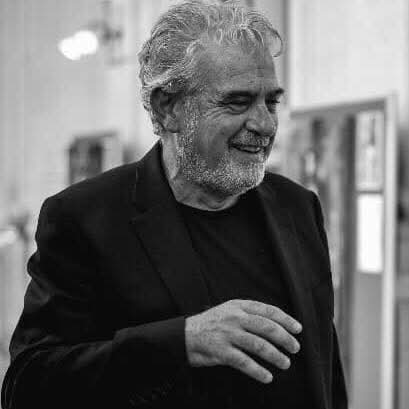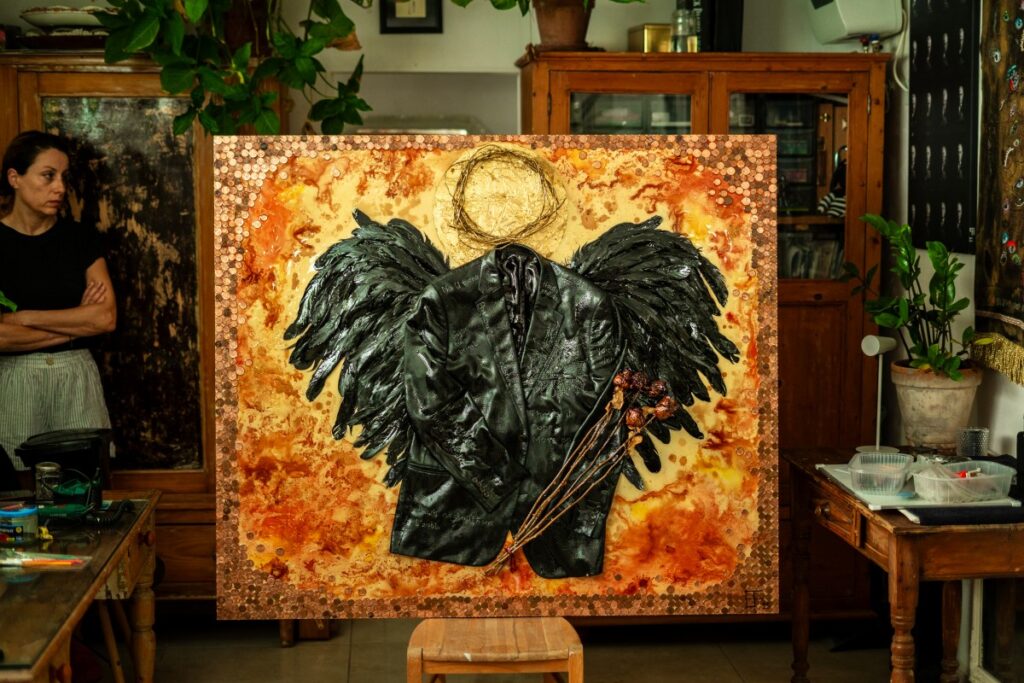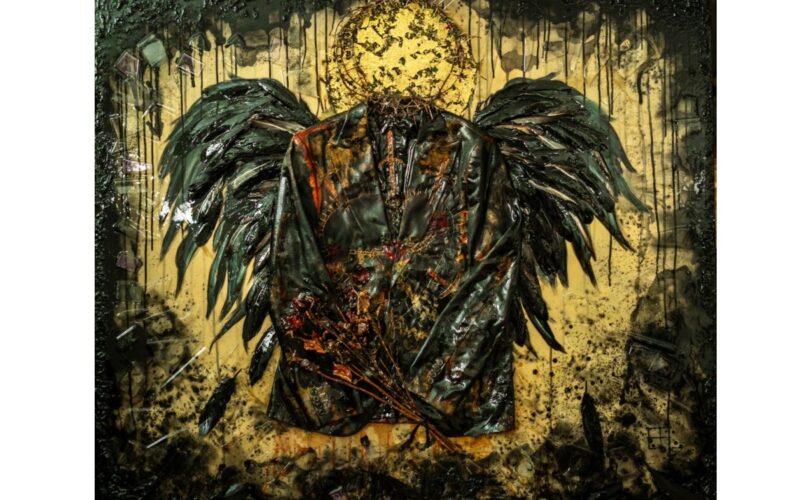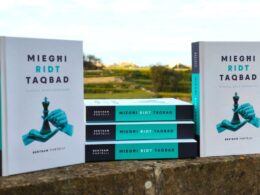A painting by Maltese artist Etienne Farrell was sold for €35,000 at the SiGMA charity auction during SiGMA Euro-Med, the gaming and tech showcase that was held from September 1 to 3 at the Mediterranean Maritime Hub in Malta. Forming part of a series of three works, the piece relates to fellow artist, the late Mark Mallia.
According to Farrell, the series is also underpinned by a passage from the Book of Revelation, wherein Archangel Michael battles against the rebel angels. The work explores themes drawn from religion, myth, literature and philosophy. It’s layered and multifaceted, both personal and universal.
Your painting titled Fallen Angel II sold for €35,000 during a recent auction under the auspices of the SiGMA Foundation. Do you feel that this is a validation for your general oeuvre or does this success more specifically refer to your artistic collaboration with the late Mark Mallia, whose death shocked the Maltese art world in July 2024? If I remember correctly, a Mallia painting had sold for a considerable amount in a previous SiGMA auction.

Fallen Angel II is the second in a trilogy. While there are painted elements, the piece is primarily a mixed-media work on wood (140cm x 120cm). It was auctioned at the SiGMA Euro-Med Charity Auction, an event that forms part of the SiGMA Euro-Med Awards and supports the foundation’s charitable missions.
If the buyer was motivated by the fact that I had collaborated with Mark, I believe they would have invested in one of his works directly, not mine. The piece stands on its own merit, even though it is inherently tied to Mark on a conceptual and emotional level.
Yes, Mark participated in a similar SiGMA auction in 2018 and was truly pleased that his work sold for €18,000. He spoke of it with great pride.
During a phone conversation I had with Mallia a few days before his untimely death on July 23 of last year, he spoke enthusiastically about his trip to Florence to view the works of Anselm Kiefer, whose exhibition Fallen Angels was being held at Palazzo Strozzi. He claimed that the show had opened new creative paths for him. Sadly, he didn’t have the opportunity to develop those ideas. Does your painting – Mark’s jacket included – investigate the themes he might have explored further after his Florentine epiphany?
I remember that trip vividly. It was our last together and it was Mark’s first time seeing Kiefer’s work up close. That experience left a profound impression on him. However, the title Fallen Angel was not inspired by Kiefer’s exhibition. It is a direct reference to Mark’s personal conviction that he was a fallen angel.
The use of Mark’s jacket and other personal items, such as the crowns of thorns I created and used on him for my Personal Jesus work, and the bouquets of roses he had given me, serves as a symbolic act of embalming: an intimate gesture of preparing his earthly presence for what lies beyond and helping to ease his transition into the aura of the Fallen Angel. The work is deeply personal, rather than a reference to any specific exhibition.

During that trip, we encountered a wide range of artworks and spent time planning upcoming solo and joint exhibitions, including shows in France, Italy and a major exhibition in New York that was to celebrate Mark’s 60th birthday this past April. After his passing, I cancelled all these plans, including my own solo projects. It is only this year that I have felt able to begin working again.
Fallen Angel II demonstrates your versatility as an artist – an ability you shared with Mallia. From installations to photography, sculpture to painting, your artistic expression spans themes and media. During the years of your collaboration, the mutual influence was evident. Do you feel your current explorations are now more personal or does Mallia still collaborate with you in a subliminal way?
Our decision to work together came remarkably quickly. We had only known each other for a matter of days but Mark immediately recognised how aligned we were, conceptually and creatively. I remember his reaction the first time he saw my work in person. He leafed through my journals muttering that this was his work, that I was far more unhinged than he was and that we were living in each other’s minds. He even began signing some of my sketchbooks.
Strangely enough, I hadn’t followed his work before he contacted me, initially for a photo shoot that we never actually carried out. But when we met, we clicked immediately. We would begin or complete one another’s sentences or ideas, often not knowing who had come up with what. Collaboration didn’t require discussion even though we enjoyed talking.

We simply knew what needed to be done. I would work into the night and he would pick up the piece in the morning. We rarely spoke while creating and to me it felt like I was working with four hands. He described it the same way. It was like working with a doppelgänger.
We shared not just artistic practice but emotional and sensory synchronicities: headaches, cravings, music, moods, books, places. I miss that dearly. And, yes, it is painful to know that I will never experience that level of creative fusion again.










